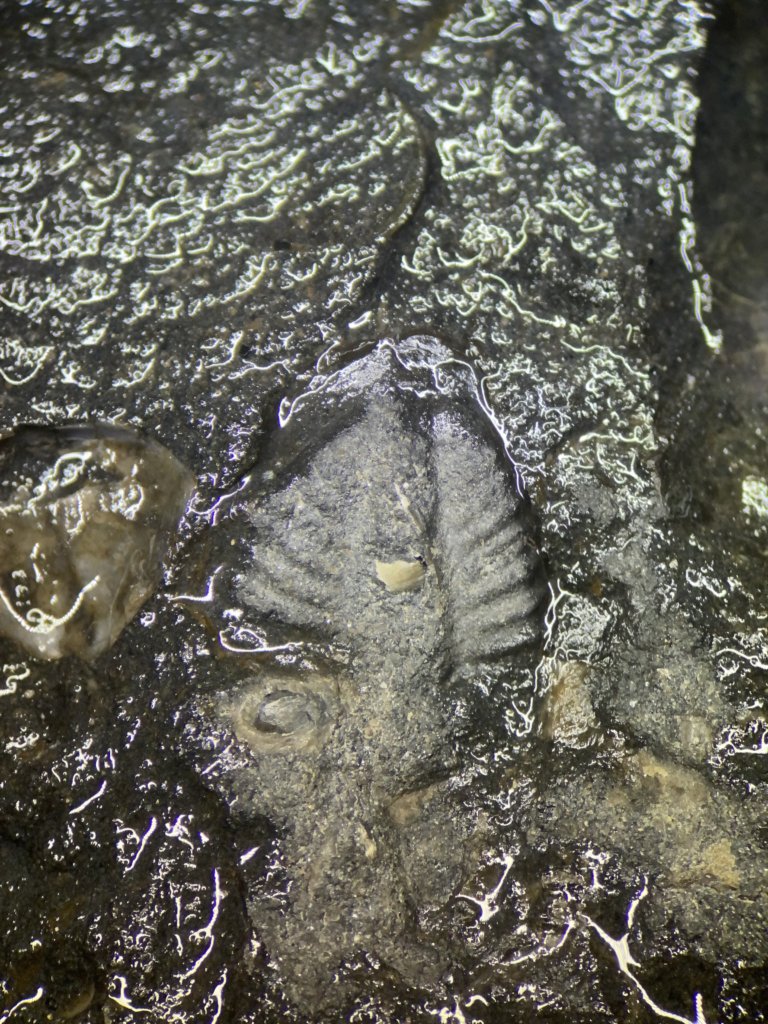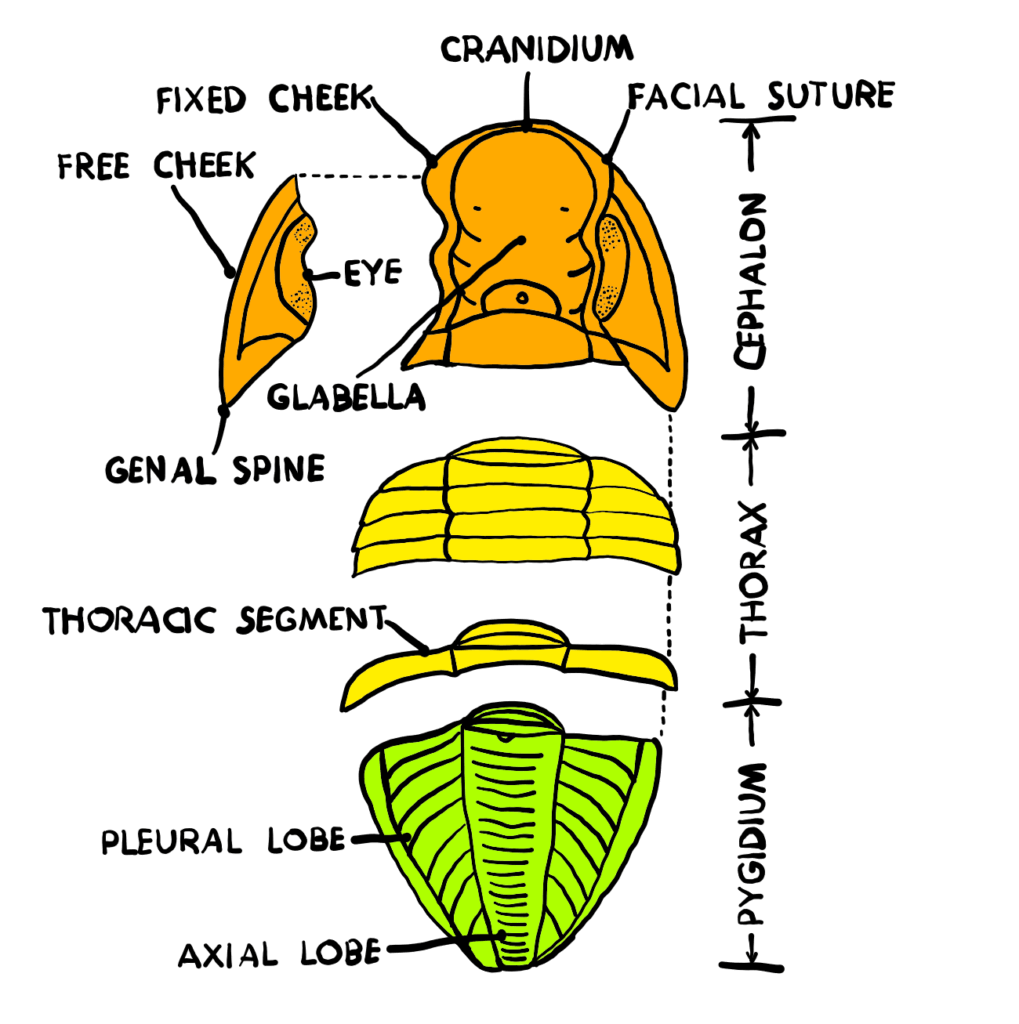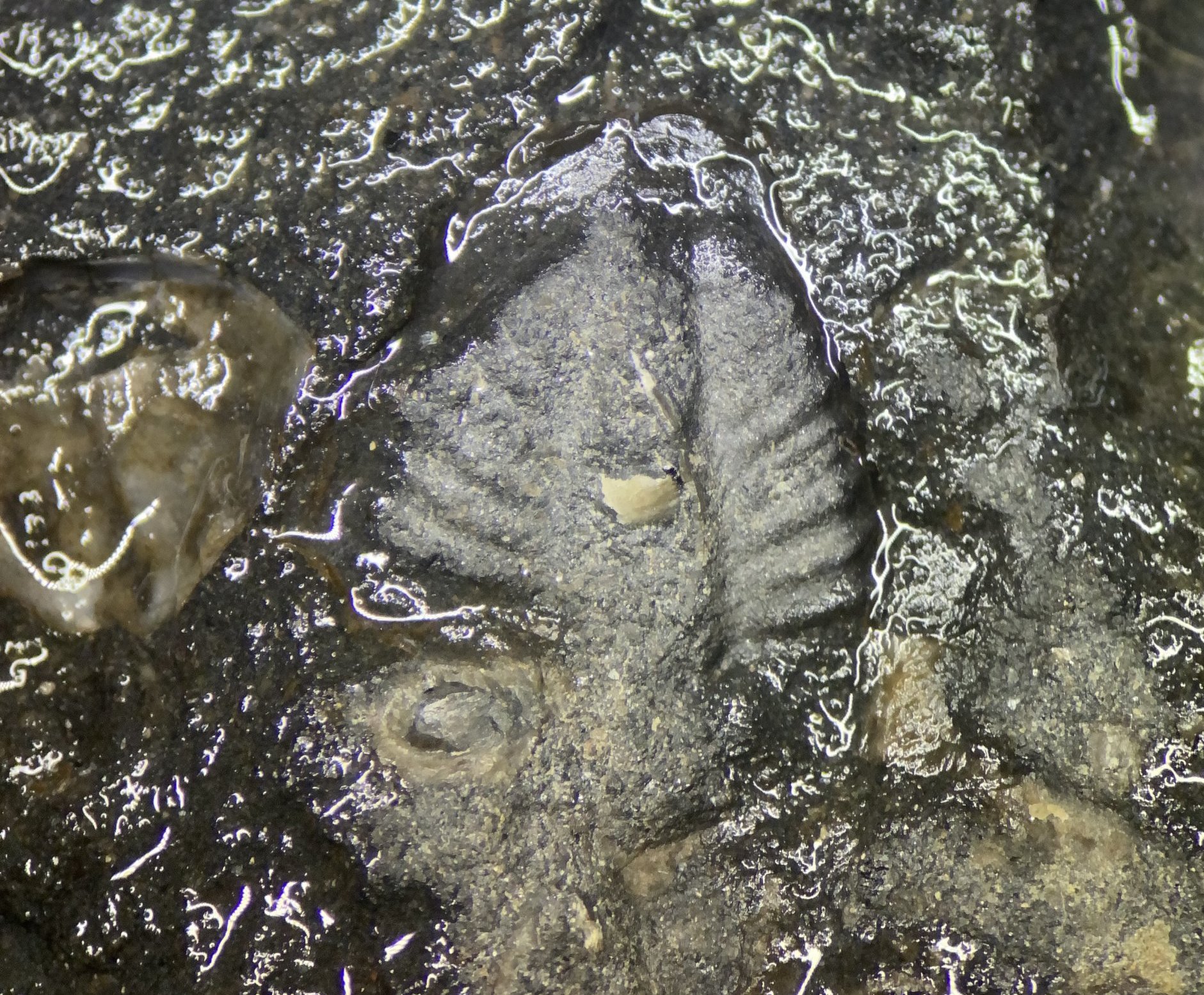Catalog Number: CG-0040
I found this trilobite tail, also known as a pygidium, embedded in Brush Creek Limestone. By the Carboniferous, trilobites were on the decline, and evolution made them smaller. Only the order Proetida survived into the Carboniferous and died out at the end of the Permian.
Two species represent the Brush Creek limestone: Ameura missouriensis (Shumard) and Ditomopyge scitula (Meek & Worthen). This specimen could be a tail from either one. In the Ames Limestone, one can find Ditomopyge decurtata (Gheyselinck).

Pennsylvanian Trilobite Diagram
Below is a diagram of a typical Pennsylvanian trilobite. As you can see in green, the pygidium, or tail, contains the pleural and axial Lobe. These are both visible in the above specimen.

More about Carboniferous Trilobites Online
- Order Proetida – Sam Gon III, a Guide to the Orders of Trilobites
- Permian–Triassic extinction event – Wikipedia
- 1970, Pabian, R.K., Record in Rock: A Handbook of the Invertebrate Fossils of Nebraska

